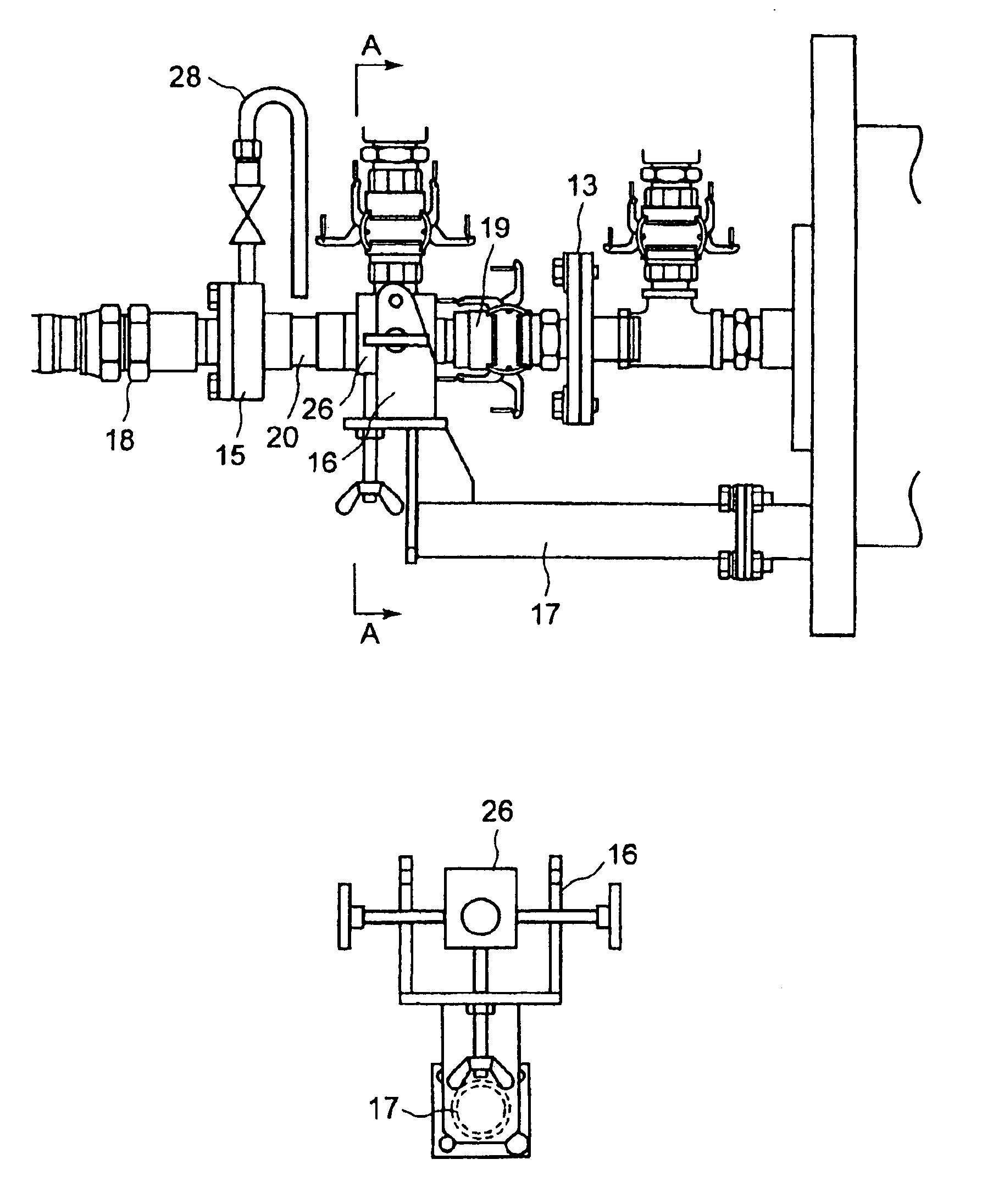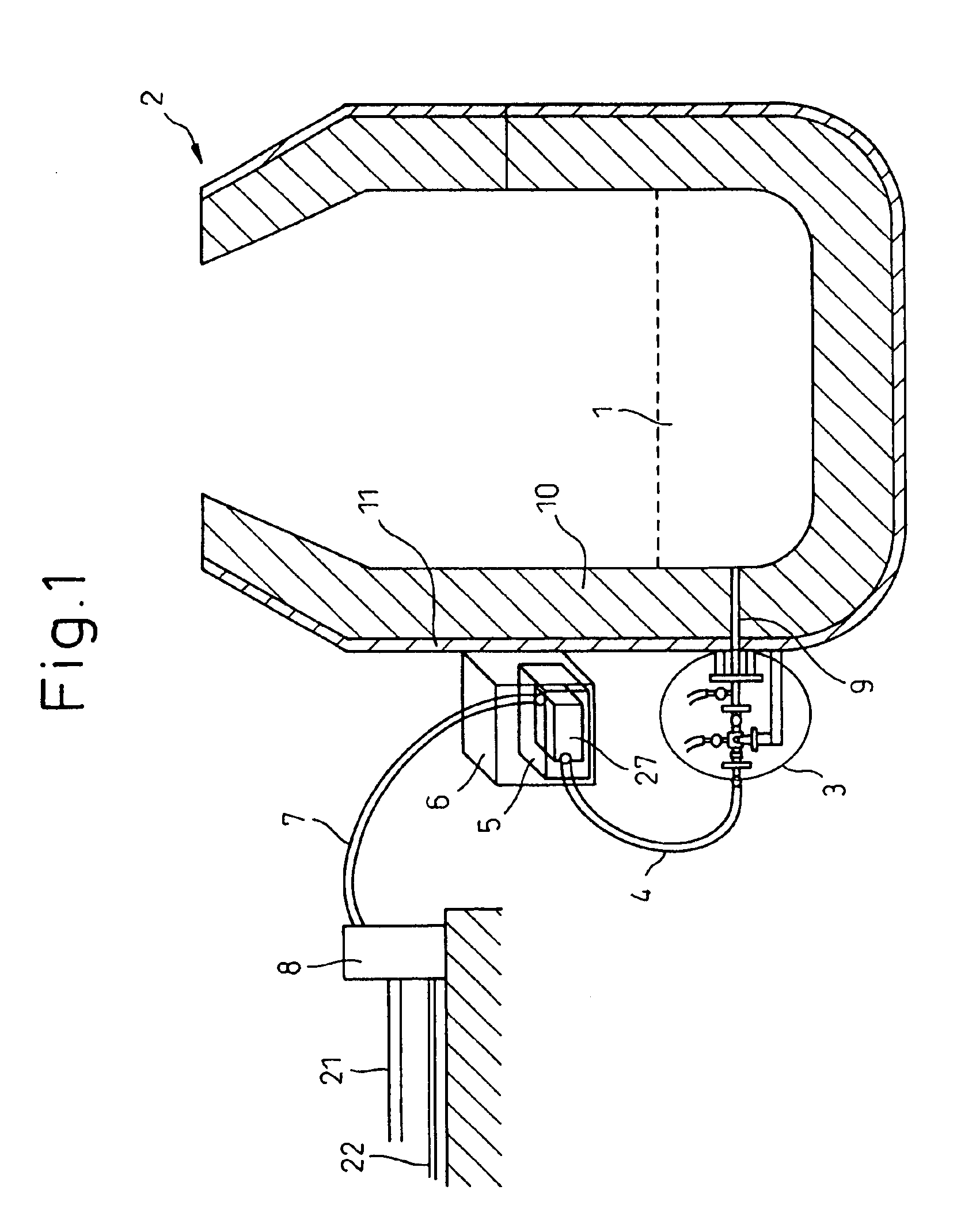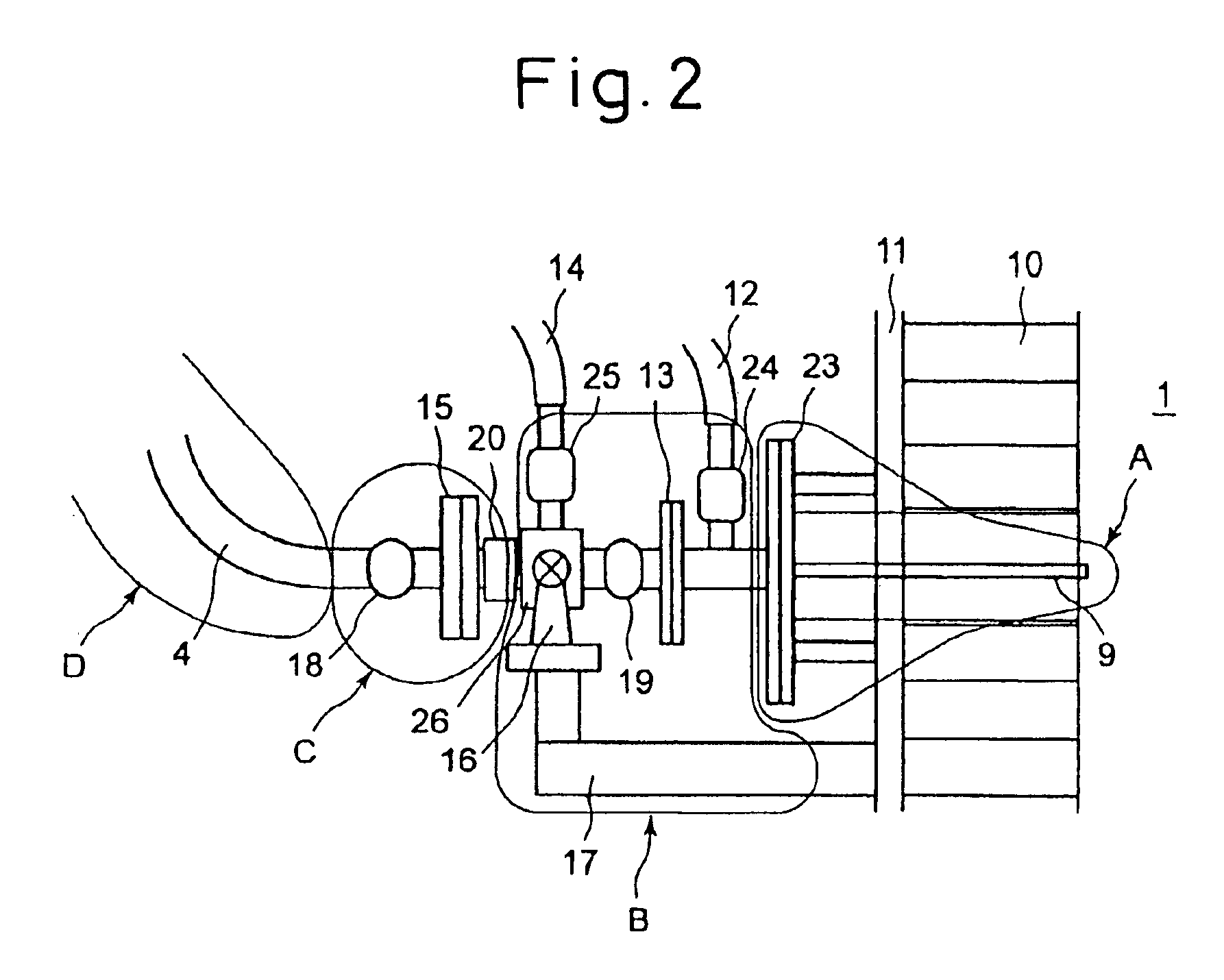Apparatus and method for measuring temperature of molten metal
a technology of molten metal and apparatus, applied in the direction of optical radiation measurement, instruments, furnaces, etc., can solve the problems of unfree method, lack of safety, productivity drop, etc., and achieve the effect of deteriorating the accuracy of the temperature of molten metal converted from the luminance value and image reduction
- Summary
- Abstract
- Description
- Claims
- Application Information
AI Technical Summary
Benefits of technology
Problems solved by technology
Method used
Image
Examples
Embodiment Construction
[0040]An exemplary embodiment of the present invention is described below with reference to the drawings.
[0041]Referring to FIG. 1, a continuous temperature measurement nozzle 9 disposed at a lower part of a side wall of a refining furnace as a vessel of a molten metal 1 is connected to an image fiber protection tube 4 through a connection device portion 3. Thermal radiation light incident from a distal end of a nozzle keeping contact with the molten metal 1 travels from a light reception portion at a distal end of an image fiber inside the connection device, is incident into a charge-coupled device (“CCD”) camera 27, inside an accommodation box 5 of the CCD camera 27 through the image fiber protection tube 44, and converted to signals as images by the CCD camera 27. The signals are sent to an image processing unit through camera cables 7 and 21. A purge / cooling gas of the camera and the image fiber is introduced into the camera cable 7 from a gas piping 22 through a gas mixing vess...
PUM
| Property | Measurement | Unit |
|---|---|---|
| diameter | aaaaa | aaaaa |
| inner diameter | aaaaa | aaaaa |
| thickness | aaaaa | aaaaa |
Abstract
Description
Claims
Application Information
 Login to View More
Login to View More - R&D
- Intellectual Property
- Life Sciences
- Materials
- Tech Scout
- Unparalleled Data Quality
- Higher Quality Content
- 60% Fewer Hallucinations
Browse by: Latest US Patents, China's latest patents, Technical Efficacy Thesaurus, Application Domain, Technology Topic, Popular Technical Reports.
© 2025 PatSnap. All rights reserved.Legal|Privacy policy|Modern Slavery Act Transparency Statement|Sitemap|About US| Contact US: help@patsnap.com



